
Environmental Seismology Investigation into the Dynamics of Alaskan Icefalls
Yoram Terleth, PhD in Glaciology at University of Idaho | Juneau Icefield Research Program


“Low elevation outlet glaciers around the Juneau Icefield, Alaska, are losing mass at a rapid pace (Davies et al., 2024). In large part, this loss is caused by reduced mass transfer from higher elevations to valley glaciers, through icefalls. Many icefalls around the Juneau Icefield have disconnected in the past 50 years, and it is plausible that the Vaughan Lewis (VL) icefall will disconnect in the future. Monitoring changes in icefall behaviour informs our understanding of the pace of outlet glacier retreat.”
PROJECT INFORMATION
Yoram Terleth has successfully defended his PhD in Glaciology at University of Idaho. He studies icefalls: specifically how they influence rapid loss of icefield mass, icefall disconnect and monitoring their behavior to inform understanding of the pace of outlet glacier retreat. He currently oversees a dual-purpose study that is a collaborative effort with the Juneau Icefield Research Program (JIRP). Not only does the study contribute invaluable insights into glacier behavior, it also offers an educational opportunity for aspiring field scientists involved with JIRP. The collaboration involves JIRP students in the deployment of seismic stations, providing mentorship and hands-on experience in scientific endeavours. (Terleth's proposed study for the Pegasus Quick Deploy Grant-in-Kind)

Challenge 1 : Getting Started
Yoram needed a seismic monitoring solution that was low power and portable for a short duration as the field study was intended to last no longer than 2 weeks.
He had ten students and volunteers lined up from the Juneau Icefield Research Program to help with the remote field work, but he didn’t have seismic instrumentation to conduct the study. The team applied for a Pegasus Quick Deploy Kit Grant-in-Kind from Nanometrics and was awarded the grant at the AGU 2023. Nanometrics loaned Yoram 5 briefcase-sized sized Pegasus Quick Deploy Kits (PQDK), consisting of a portable Pelican carrying case, a Pegasus digitizer, Trillium Compact Horizon 120 second broadband seismometer, battery, solar panel and the required cables. He and his team were also able to easily and simply use the Pegasus mobile app for the experiment set up and deployment.
Challenge 2: Field Deployment on the Juneau Ice Field, Alaska
Working on ice flows and glaciers in Alaska presents a unique set of challenges, including remote and dangerous conditions, a limited deployment season, lack of power and infrastructure, difficulty in accessing the sites, a changeable environment, and the necessity of transporting equipment on foot.
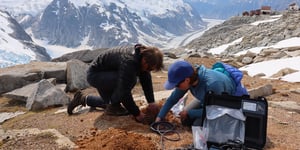
Deployment Methodology:
The study focused its deployment of 5 stations around the Vaughn Lewis Icefall on the Juneau Icefield, Alaska. The team deployed three stations on the ice: two were placed in the region of extensional stress just upstream of the icefall, while one was placed further up-glacier, nearby the Storm Range massif to replicate a deployment that was done during the 1980s. Two additional stations were deployed on rock formations on the west side of the icefall. The deployment spanned just shy of two weeks, a significant duration for cryo-seismological work, enabling the collection of comprehensive data.
The team used the solar power system included with the kits during deployment. Additionally, they used the Pegasus mobile app, which allowed for several very rapid checks of the instrument throughout the field study, without ever having to open up the water-proof cases.
Using the direct burial method:
- Sensors were deployed along the side of the glacier and buried 30cm deep in glacier-proximal sediment;
- On the glacier, holes were augured in the blue ice and firn to a depth of about one meter;
- The depth was chosen based on how much ice and snow was expected to melt away during the deployment, to ensure the sensor didn’t get exposed;
- A bottom layer of sediment was added to the augered hole, after which the sensor was lowered in;
- At this stage, it was easily verified that the sensor was level using the Pegagus mobile app;
- The hole was backfilled with sediment, and then with snow.
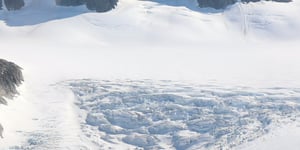
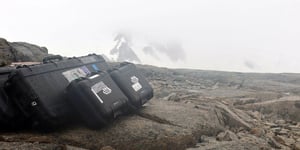
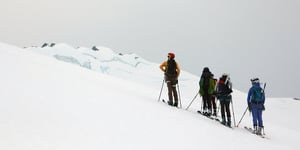
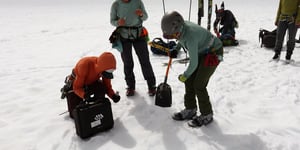
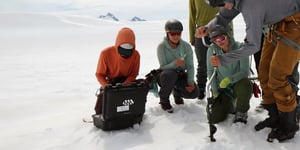
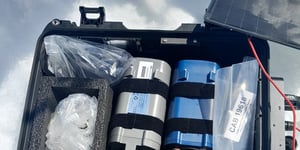
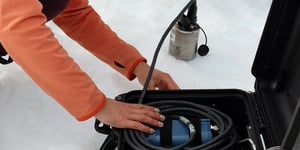
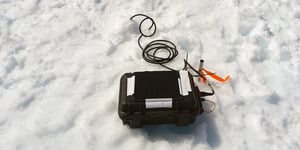

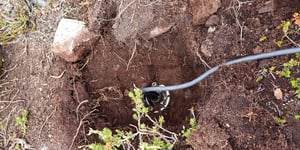
JIRP Scientists shown in photos: Tatum Witter, May Lamb, Ellery McQuilkin, Oliver Cole, Hannah Watt, Amanda Newcombe and Roan Bendana.
SOLUTION
Pegasus is a highly-portable, low-power and mobile-friendly seismic acquisition system that delivers an intuitive, efficient workflow with a fast, accurate and safe data delivery system. The Pegasus Quick Deploy Kit is a convenient, compact, and standalone Broadband Node station. It minimizes the time and overhead of packing, and facilitates transportation and station set-up. The deployment case, the size of a small carry-on suitcase, is suitable for short deployments without a supplementary power source or with solar power to extend the duration of the deployment.
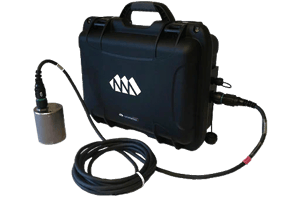
Intuitive and easy to use, especially when relying on students or volunteers who are new to handling seismic instrumentation, the key features of the Pegasus Quick Deploy Kit made a huge difference to the success of the study, as it enabled Yoram’s team to obtain data quickly and reliably and ensured his science outcomes. The Pegasus QDK has key differentiating features that proved advantageous for this type of study in the icefield:
- Low power (<400 mWatts combined for seismometer/digitizer)
- Lightning fast data retrieval
- Compact size, lightweight and easy to carry into the field (<2kg).
RESULTS
One year later… a poster was published at AGU 2024
The Pegasus Quick Deploy Kit enabled Yoram’s team to conduct a successful deployment, obtaining seismic data quickly and reliably in a challenging environment. Yoram and his colleagues presented their findings at the AGU 2024 (Abstract Link) just one year after winning the PQDK Grant. View the AGU 2024 poster here (Poster Link).
